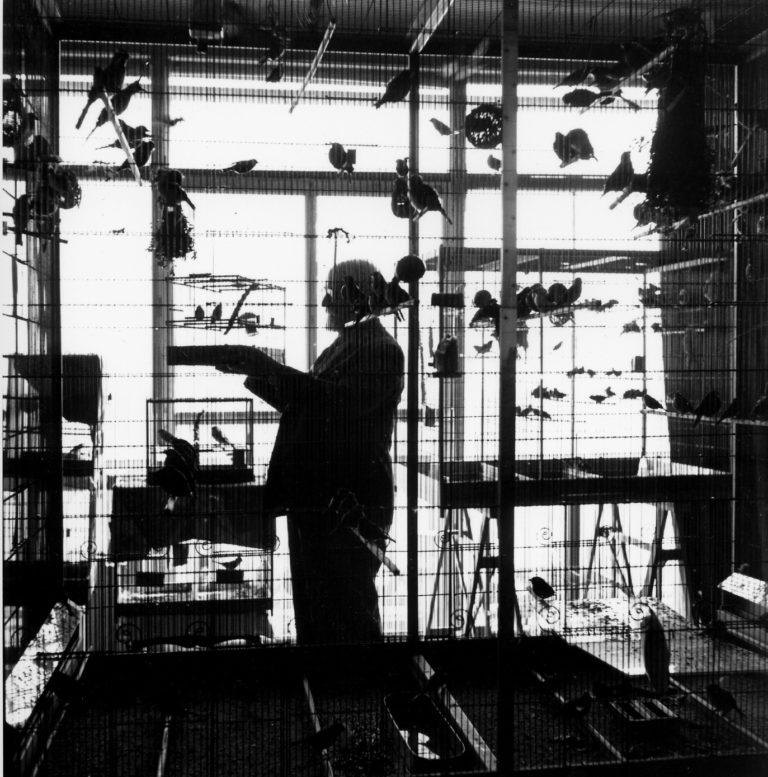CFL
2004 - Installation (Installation)
Loris Gréaud
The acronym “CFL” stands for an existing light standard (Compact Fluorescent Light) as well as a standard nutrient (Cognitive Fooding Laboratory). “CFL” is a mobile laboratory for growth of watercress shoots which contain high levels of anthocyanin – a natural pigment used by fighter pilots to increase their visual acuity at night in order to achieve better responses to light stimuli. In the work Celador, a taste of illusion (2007), the viewer is invited to consume the plants – a candy with the flavor of illusion. “CFL,” which refers to a possibility of better viewing in the dark, was made alongside Dream machines which consists of light boxes to see with closed eyes. These inventions blend biochemistry, science fiction, and parapsychology. “The artist’s taste for fiction, scripts, playing with fears, fantasies and obsessions herein, exemplifies a quest for a work which only exists by rumors,” critic Marjolaine Lévy has stated.
Research by Loris Gréaud is pieced together in the exhibition space in effort to build a total work of art and a world view. “Cellar Door,” his solo exhibition held at the Palais de Tokyo in 2008, is constructed like a movie set, spanning across divergent processes and temporalities. Gréaud’s work, extracted from science fiction literature, technology, and science, questions immateriality as well as the real and the virtual. He is known to make references to Yves Klein in “The Merzball Pavilion” (2008), to spread the smell of the planet Mars in “Spirit” (2005), to remodel an apartment magnetic fields specialist in “Residents 1” (2005), to send messages in Morse code by light in “Limen” (2003), and create nanosculptures with “Untilted01” (2006). The artist does not make the invisible visible, but instead makes the invisible readable. “These notions of invisibility and off-screen non-presence are engines of desire” Gréaud states. Paul Ardenne when speaking about Gréaud referred to him as the “artist as phenomenologist,” describing his works and their high degree of sophistication as a “phenomenological subject.” Loris Gréaud was born in 1979 in Eaubonne, France. He lives and works in Paris.
Colors:
Other related works, blended automatically
» see more

© » KADIST
Loris Gréaud
2004This work refers to the “Dream Machines”, an experimental object invented by the painter and writer Brion Gysin and the scientist Ian Sommerville, and which is composed of a light bulb with light passing through slits in a rotating cylinder...
Related works sharing similar palette
» see more

© » KADIST
Claudia Joskowicz
2015Some Dead Don’t Make a Sound (Hay muertos que no hacen ruido) is a single-channel video by Claudia Joskowicz that features the Mexican legend of the Weeping Woman (La Llorona) as its main protagonist...

© » KADIST
María Teresa Hincapié
1989In the performance video Vitrina , María Teresa Hincapié stood inside a storefront window in downtown Bogota, unannounced, for eight hours a day, wearing a uniform and initially carrying out cleaning chores...
Other works by: » Loris Gréaud
» see more

© » KADIST
Loris Gréaud
2004This work refers to the “Dream Machines”, an experimental object invented by the painter and writer Brion Gysin and the scientist Ian Sommerville, and which is composed of a light bulb with light passing through slits in a rotating cylinder...
Related artist(s) to: Loris Gréaud » Jonathan Monk, » Hans Ulrich Obrist, » Jennifer Bornstein, » Jens Hoffmann, » Joachim Koester, » Joan Jonas, » Lee Ranaldo, » Matthew Brannon, » Nicolas Bourriaud, » Olafur Eliasson
» see more

© » KADIST
Jennifer Bornstein
1994Collectors’ Favorites is an episode of local cable program from the mid-1990s in which ordinary people were invited to present their personal collections—a concept that in many ways anticipates current reality TV shows and internet videos...

© » KADIST
Joachim Koester
2007Tarantism is the name of disease which appeared in southern Italy, resulting from the bite of a spider called Tarantula...
Related works found in the same semantic group
» see more

© » KADIST
David Horvitz
2017The title of the work Eridanus refers to the constellation of the river of ancient Athens that meanders across in the night sky...

© » KADIST
Yuyan Wang
2022The Moon Also Rises by Yuyan Wang comprises a one-channel video and light installation...






